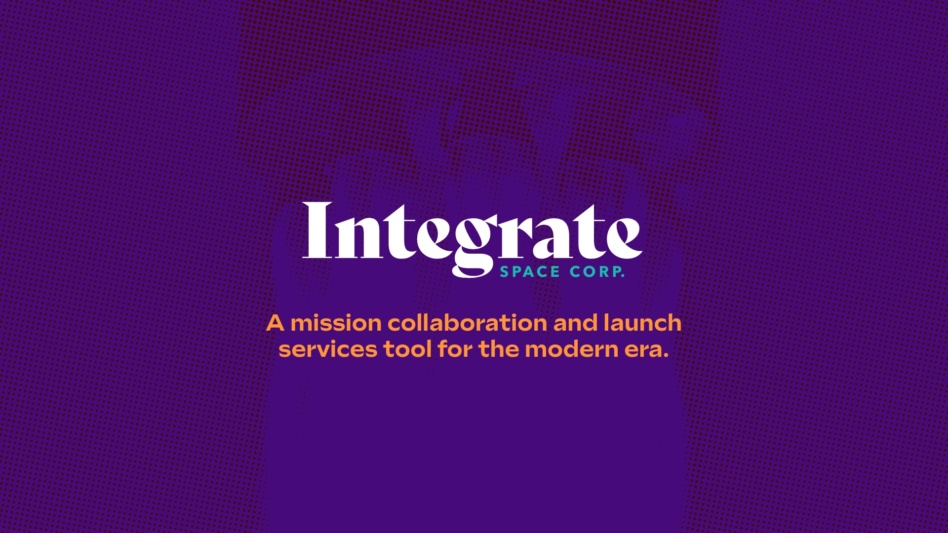Integrate Space Corp. aims to modernize how you launch your payload through its new software stack. The newly hatched startup is creating a collaborative tool for spacecraft manufacturers, rideshare aggregators, and launch providers to organize missions digitally.
The basics: Launched by space industry veteran John Conafay and technical lead Paul Reesman earlier this year, Integrate hopes to solve the launch capacity management issue plaguing the industry. They hope to streamline the documentation redundancies and communications gaps between payload and launch provider through the software.
$$$: The startup raised a $970,000 pre-seed round led by Village Global this past June. Integrate stands as a team of four right now but is growing fast.
Payload caught up with Integrate CEO/Co-Founder John Conafay and Head of Product & Operations Andrew Sloan. The pair met years ago at SmallSat in Utah, a major industry conference, so it is only fitting they will launch the alpha version of their product at the event next week.
- John has a hefty space resume having spent time at Spire, BryceTech, Astranis, SpaceFlight, and ABL Space Systems.
- Andrew ran brand at Momentus. He also has a design and brand agency, Cosma Schema, where he worked with Firefly, NanoRacks, and ABL.
Pain point: Both say they were frustrated with the design and functionality problems within the industry, especially around mission planning.
Read on to find out how they are solving these problems with the solution they wish they had earlier. NB: This Q+A was edited for clarity and length.
Could you tell us a bit about the problem you saw that led to the creation of Integrate?
Andrew: Communication and collaboration in the space industry is antiquated at best, broken at worst. So much complexity is handled in people’s inboxes, spreadsheets, Smartsheets, and hacked-together versions of Salesforce. Or sometimes even just like Post-it notes on a white board in someone’s office…you know, managing entire manifest configurations.
Every other industry in the world has modernized and digitized these processes because inter-organization collaboration is key. The best way that humans have figured out how to do it is digitally, but for some reason, we are not doing it in space yet.
So, Integrate seeks to solve that problem with a single third-party application that can speak to multiple companies and allow multiple companies to communicate effortlessly about their mission planning and management, milestones, launch services…all of these things.
What made your team think you could solve it?
John: I had my first look at the complexity of deploying small satellite constellations on large vehicles as an intern at Spire Global, and saw all of the requirements that go into this seemingly small but critical part of the space industry.
I later went on to become employee #6 at Astranis where BD, launch, and procurement were part of the many hats I wore. This also included weeding out what small launchers could launch us to GTO.
I gained a real understanding of the complexity in rideshare at Spaceflight and kind of understood the crux of the communication and coordination complexity involved in putting a whole bunch of small satellites on a whole bunch of small vehicles for a whole bunch of different missions. From vehicles in development to vehicles that were flying, I was able to work with an incredible team over there and learned an immense amount from all of them.
While at ABL, I was still noticing the same complexity in manifest configuration, mission management, communication, and collaboration where a lot of it was done manually, like via email. This is not unique to any one of these companies whatsoever–it’s pretty much [the industry standard]. So I said: ‘Hey, I want to go try to fix this for everyone.’ They completely understood, and that’s where Integrate was born.
Andrew: It has been in my DNA for some time to eat, sleep, and breathe the design and functionality problems that the industry is experiencing. This particular problem that Integrate is solving is something I ran into [time and again]. I was privileged because I could see into different companies as a client services agency. I was brought in, and over and over again, I kept speaking with mission managers and noticing that there was this same problem that everyone was having, which was really a collaboration and communication problem.
What is your mission and what motivates you?
Andrew: Our mission is to eliminate all points of friction in the space economy by building the digital tools that have been lacking for ages. We envision a thriving space economy accelerated by seamless transactions in partnership, finance, and communication.
John: We have deep insight into the launch services industry and want to help a lot of the people that have worked on these things through digitizing these complex processes.
What makes you different from other mission management software providers?
John: So we’ve seen quite a few solutions out there. They tend to focus on lead generation. If you remember ten years ago when you would order a taxi, it was really novel to be able to go to a website, input the pickup and destination address, and then expect a taxi to just show up at your door at the given time. Except it never really worked like that, it was generally more like you filling out this form, someone would call or email you, and ask you for the same details again. You would coordinate manually or by phone.
That’s what a lot of solutions provide currently. So we’re starting with the fundamental pain points of this launch capacity management as well as mission coordination and management and working out from there.
Andrew: Another differentiator here is that some of the other solutions we’ve seen have been developed internally, by either launch providers or launch aggregators. We see a kind of twofold problem with internal builds.
One is that to really pull it off with the level of fidelity, complexity, and functionality that this tool needs in order to provide value, you really need a dedicated team of software engineers on this thing 24/7, 365 days a year to really give it support. That includes implementing new features, maintaining the tool, responding to customers, et cetera.
Secondly, this solution can’t live in a walled garden. If it’s one launcher’s system, they’re only interacting with their customers, and that leaves everyone else in the lurch. There needs to be a third party solution for everyone. For example, if you are a spacecraft manufacturer looking for launch options, you can begin your journey on Integrate, have your spacecraft questionnaire filled out, and then pass it around.
The entire industry needs to be able to interact and move fluidly through this without anyone putting up a wall.
How do you see your product changing mission planning? What problems in the industry and society are you hoping to solve?
John: Spacecraft manufacturers generally have to go out and fill out 10,15, 20 unique spacecraft questionnaires for every launch vehicle or launch services provider that they interact with, getting into some pretty nitty gritty details about their spacecraft and their needs.
So we’re centralizing that to a single platform to add some permanence to that questionnaire so instead of filling out one for every launch services provider, you can fill out one and have it live in the application, and distribute it as necessary.
The hope is, of course, that rideshare aggregators and launch service providers are on the platform as well so they directly interact with their customers, and their customers in turn can interact with their vendors by transferring launch requirements digitally and seamlessly. The fundamental issue at the core of this is an inventory management issue, as boring as that might sound.
The complexity involved is really born of moving from 2D logistics to 3D logistics. We live in a 2D logistics world, we drive on roads to a destination on a flat plane a certain distance away. Even when we fly, we all sit on a flat plane (pun intended) until we reach a destination on a curved plane some distance away from our origination point.
When you’re dealing with space transportation logistics, you’re adding a third dimension for consideration: satellites constantly in motion around the Earth, rockets launching up, over, and around, satellites cantilevered about a structure that are then deployed in a direction that doesn’t have a lot to do with the direction they end up moving. Considering all of this puts into perspective how difficult a problem this is to tackle.
What’s next for Integrate?
John: We are meeting with dozens of very enthusiastic potential customers at SmallSat, some of which we intend to onboard for user testing at the conference and have expressed interest in becoming customers very shortly thereafter. After SmallSat we have a very intense roadmap to implement with the goal of abstracting as much complexity from the entire process of getting to orbit as possible.
Andrew: Yes, begin our alpha testing program. So we will be inviting our first set of early customers into the software and begin testing with them. Then, we’ll be implementing their feedback along with a whole host of extended new features that we already have on our roadmap. We plan to launch a beta application before the end of the year.
What are you most excited about in the industry today?
John: The proliferation of launch vehicles. Having seen it firsthand, launch is significantly constrained and it’s a bit of a monopoly. Seeing what opens up when more small launchers or medium-class launchers come online is going to be really thrilling.
Andrew: The first thing that came to mind is every time I see a new female or person of color’s voice pop on space Twitter and online. There have just been so many cool people coming into the space. It just lights me up that there are so many gals and people of color that are joining the industry, which means that either they are fighting like hell or the doors are opening. I just love that.
We’re really stoked to support that effort and help to increase that. It’s really only been the last handful of years that it’s been palpable and I’m so excited about that.
If you will be at SmallSat, reach out at [email protected].




